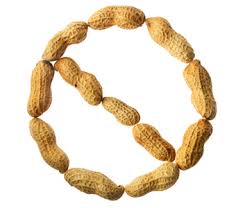The Body Mass Index (BMI) is the parameter commonly used for screening eligible patients for weight loss surgeries. The acceptable BMI for the Bariatric surgeries is 40 and above. But the trends have changed. Recently the FDA has reduced the BMI limits for individuals with preexisting additional risk factors that can be helped with weight loss.
The major risk factors include Diabetes, B.P., High Cholesterol, Osteo arthritis, Gastric re-flux / ulcer, Metabolic syndrome and Sleep apnea.
The bariatric surgeries are some of the most sought after surgeries in medical tourism. We congratulate you for taking the first step to take control of your health and quality of life. We can help you every way we can to help you to take control of your life.
We will direct you to our JCI acredited hospitals with surgeons with clinical experience in US /Western Europe. That should take care of the quality part. These doctors are some of the best in their field with vast surgical experience.
Here are some of the most commonly practiced surgeries with their pros and cons along with the price range.
Here is the trend setter. This is the least invasive of all bariatric surgeries. This is recommended for people with BMI of over 40. The FDA has recently approved the lap band for patients with BMI as low as 30 that have co morbidities , which are known to improve with weight loss. These include GERD, Hypertension, Sleep apnea, Osteo arthritis, Diabetes and metabolic syndrome.
In this procedure , the surgeon makes few tiny incisions and affix the adjustable gastric band and creates port access in the abdominal wall. The band can be adjusted simply by injecting or withdrawing saline into the port.
The major brands are Lap Band, the Realize adjustable gastric band, Heliogast and Midband The advantages include Reversible, Good weight loss, band can be adjusted without surgery to achieve goals. Average hospital stay is 2 days. Cost: Approx. $6,000
 Roux-en -Y gastric by pass:
Roux-en -Y gastric by pass: The stomach bypass / Roux-en –Y gastric bypass surgery is also known simply as Gastric By Pass. This is the gold standard bariatric surgery against which, the other procedures are compared. The procedure involves surgically restricting the size of the upper stomach, which limits the food intake and results in weight loss. This is by far most widely performed bariatric surgery with very good results. A small egg sized pouch is created in the upper stomach, which then by passes the remainder of the stomach and connected to small intestine. The normal stomach is about the size of Rugby ball ( or American football). The extent of by passing the intestine creates variations of gastric bypass. The normal small intestine is about 20-33 feet in length. The length of small bowel spared during the Y intersection determines the procedure. . In the proximal Roux-en-Y gastric bypass, most of the small intestine is preserved for the absorption of nutrients. Here the pouch is connected to the upper end of small intestine.
In the distal Roux-en-Y gastric bypass, the pouch is connected to the lower part of the small intestine( typically within 3-5 feet from the lower end.
This surgery is typically considered irreversible, although there have been cases of successful reversal. The reversal is usually considered as more complicated than the actual surgery.
The gastric bypass is performed by 2 methods. - Traditional and Laparoscopic
The Traditional gastric bypass employs conventional surgical techniques with a large incision. This results in longer recovery time and is associated with more complications.
The Laparoscopic gastric bypass greatly reduces the recovery time and associated complications. This procedure is normally considered as the toughest of all laparoscopic surgeries. Features: Better weight loss, irreversible. Average hospital stay is 4 days. Cost: Approx . $8,500
 Sleeve Gastrectomy:
Sleeve Gastrectomy:The Sleeve Gastrectomy like other bariatric surgeries is reserved for patients of BMI over 40 or BMI of over 35 if accompanied by other risk factors such as Type -2 Diabetes, Sleep apnea and Heart disease. Unlike the Gastric bypass, the small intestines are not manipulated in this surgery. The surgeon creates a banana shaped pouch in the stomach, which removes about 80-85% of the stomach. The remaining of the stomach is stapled closed. This procedure can be done laparoscopically and can be completed in 60-90 minutes. This surgery, like gastric bypass is considered irreversible. This procedure is known to cause fewer nutritional deficiencies than gastric bypass.
Features: Better Weight loss, irreversible. Average hospital stay is 4 days. Cost: Approx. $8,500
This procedure is similar to gastric bypass and sleeve gastrectomy in that a significant portion of stomach is removed. ( about 70%) thus limiting food intake and acid production. Then the small intestine is dissected and one end is connected to the end of the stomach. The bile and pancreatic juices are routed through another part of dissected small intestine and joined to the small intestine carrying food in the last 3 feet. Since the food does not come into contact with most of digestive juices, absorption is significantly reduced and thus results in weight loss.
Features: Better Weight loss, Irreversible. average hospital stay is 4 days. Cost: Approx. 9,500.

 Hair Care
Hair Care Forehead Lift
Forehead Lift Eyelid surgery
Eyelid surgery
 Lip Augmentation
Lip Augmentation
 Breast Lift
Breast Lift



 Roux-en -Y gastric by pass:
Roux-en -Y gastric by pass:  Sleeve Gastrectomy:
Sleeve Gastrectomy: